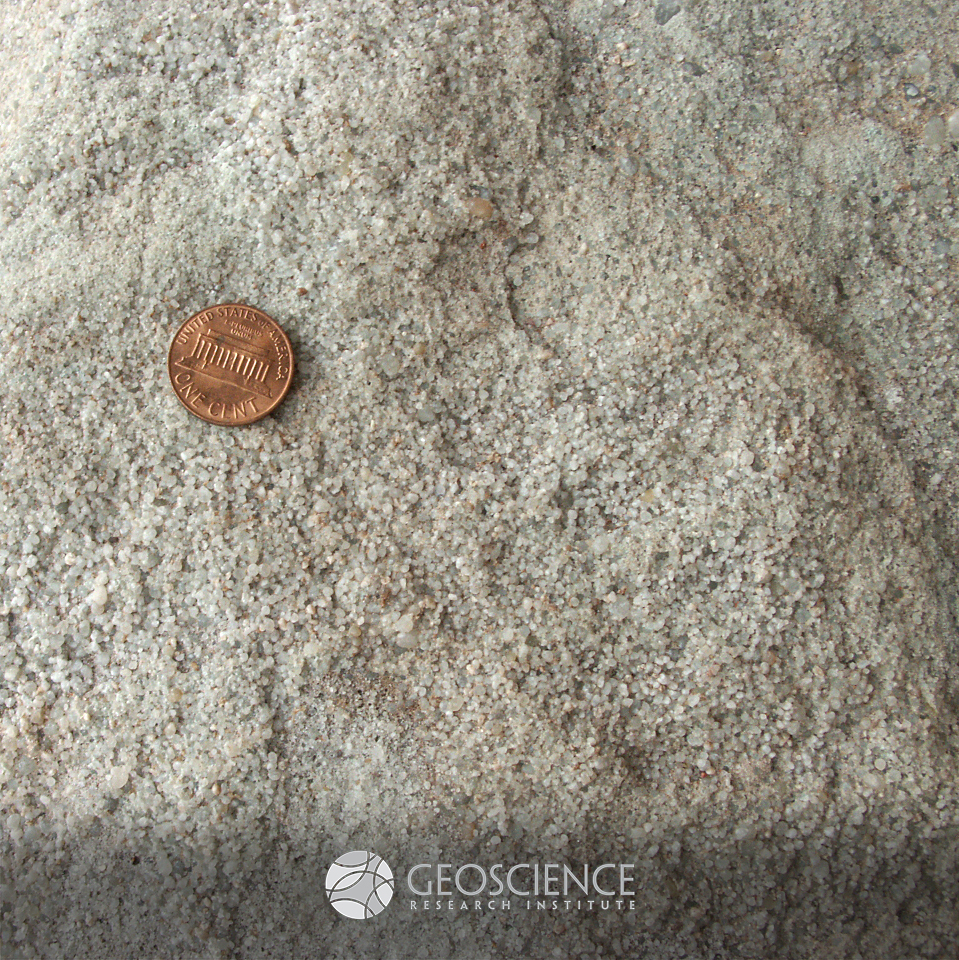©Copyright 2018 GEOSCIENCE RESEARCH INSTITUTE
11060 Campus Street • Loma Linda, California 92350 • 909-558-4548

Benthic foraminifers
Thin section microphotograph (in plane parallel light) of a fine-grained, mixed siliciclastic-carbonate sandstone from Pliocene strata of the Sorbas Basin, Spain, containing tests of miliolid benthic foraminifers.
Great Unconformity_2
View of the contact between Precambrian basement and the Cambrian Sawatch Quartzite (marked by the tree line, mid-way through the picture), in the vicinity of Glenwood Canyon, CO, US. This important contact, an erosional discontinuity called "the Great Unconformity," is found over large sections of the North American continent.
Ripple cross-lamination
Cross-sectional view of a calcareous mudstone to fine-sandstone bed, showing planar lamination passing upward to ripple-cross lamination. The symmetric shape of the ripples, the presence of foreset laminae dipping in opposite directions, and some lamina draping suggest that the cross-lamination was likely generated by wave-ripples. The sequence from planar lamination to ripple cross-lamination can be indicative of decreasing velocity of bottom currents (or changes in sediment grainsize and supply rate). Diameter of lens cap is 6 cm. Photo taken at the I-70 roadcut, near Morrison, Colorado (Cretaceous Dakota Group).
Sandstone
Thin section microphotograph (in cross-polarized light) of a poorly sorted sandstone from Pliocene strata of the Sorbas Basin, Spain, containing lithic fragments of metamorphic rocks and gypsum clasts. The high birefringence colors of muscovite contrast with the gray colors of quartz. Field of view is several cm wide.
Cambrian quartzite
This sandstone, made up mostly of quartz grains, is an example of Cambrian quartzite. This type of deposit is very widespread in North America (and in other areas of the world), where it blankets the "Great Unconformity," the erosional surface marking the contact between crystalline basement and overlying sedimentary rocks. Sawatch Formation, vicinity of Colorado Springs, CO, USA
Hyperpycnite
You may have heard of turbidites. This type of deposit forms from pulse-like flows, where sediment travels rapidly down a slope because of a gravity contrast with the surrounding fluid. Turbidites typically show an upward decrease in gain size and a vertical succession of structures (massive/planar laminated/ripple cross-laminated) indicative of decreasing energy of the flow. There are, however, some deposits that differ from turbidites by showing a symmetric internal organization, with increasing and then decreasing grainsize, and with structures pointing to increasing and then decreasing energy of the flow. Hyperpycnites are such kind of deposit, forming when a river, laden with sediment during its flooding stage, flows into a basin. The flow typically waxes, reaches peak strength, and then wanes. Therefore, the resulting hyperpycnite reflects the waxing and waning cycle in its internal structure. This picture shows a nice hyperpycnite from the Pennsylvanian Minturn Formation, near McCoy (CO, USA). The bed displays reverse grading in its bottom part and a gradual upward transition from ripple laminated, to planar laminated, to massive (waxing phase). The upper part of the bed shows normal grading and hints of ripple-cross lamination (waning phase).





